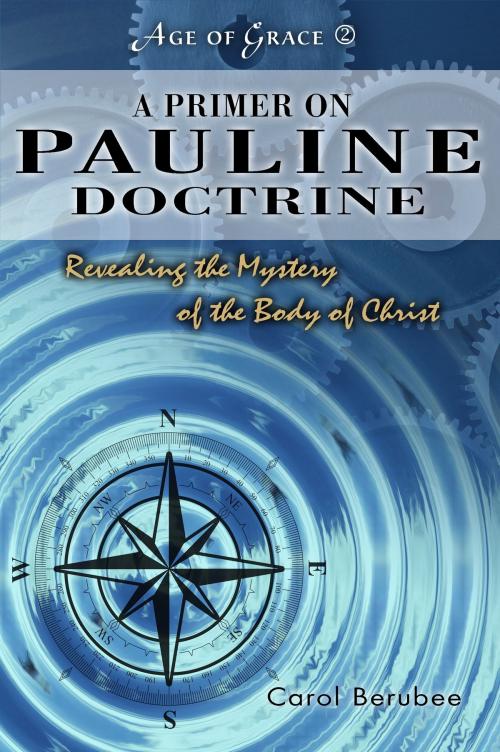A Primer On Pauline Doctrine
Revealing the Mystery of the Body of Christ
Nonfiction, Religion & Spirituality, Bible & Bible Studies| Author: | Carol Berubee | ISBN: | 9781543960853 |
| Publisher: | BookBaby | Publication: | March 9, 2019 |
| Imprint: | BookBaby | Language: | English |
| Author: | Carol Berubee |
| ISBN: | 9781543960853 |
| Publisher: | BookBaby |
| Publication: | March 9, 2019 |
| Imprint: | BookBaby |
| Language: | English |
The Christian desiring to understand the Apostle Paul's epistles should have some understanding of Judaism, Greek philosophy, and first-century cultural norms. The Christian who seeks to walk with God in this dispensation of grace must grasp the teaching of Paul's epistle to the Church at Rome, particularly Romans 1 through 8, and then revel in the mystery of Christ through His Body, the Church, as revealed in Ephesians and Colossians. As the Christian comes to know the mutually exclusive nature of law and grace, and the inexhaustible grace of God in the Body of Christ, he must then apply those truths in his daily walk with the Lord. These truths of grace and the mystery of the Body form the foundation for all of Paul's teachings on such subjects as salvation, sanctification, the Rapture of the Church, the Bema Judgment, the regulations in the local churches, the gifts of the Spirit, asceticism, giving, marriage, and prayer. The Christian may find books and articles focused on one or more of the various topics of law and grace, or the Body of Christ, or Paul's doctrines in contrast to Judaism, or Gnosticism, or the cultural setting of first-century Christianity. However, many Christians would like to have a single resource to which he or she may turn as an introduction to Christianity and a companion to more specialized and in-depth books. This primer on Pauline doctrine gives the reader a broad spectrum of knowledge in one volume. Part I is a sketch of the major differences between the Hebraic and Hellenic mindsets, including the differences with Judaism according to the sects of the Pharisees, Sadducees, and Essenes; the general teachings of the Greek philosophers; and the idolatry of the masses. Paul's religious thought both before and after his conversion is briefly outlined so that we may see how his new Christian theology changed his life and how he navigated the cultural landscape. A brief outline of each of Paul's epistles is then presented to orient the reader to the tenor of Pauline doctrine. Part II is an exegesis of Romans 1:16-8:28, the text of which is the foundation of Christianity. The world comes under a comprehensive indictment, subject to the wrath of God, but He sends His Son to pay the penalty. Not only are sins forgiven, but sin itself is vanquished, the old man is crucified, and the believer is set free from the power of sin. Part III is an unfolding of the mystery of Christ, laid out in eight facets. The Body of Christ is revealed to us only by the Apostle Paul who explains the setting aside of Israel; the calling out of Gentiles; the unity of Jews and Gentiles as one New Man; and the Rapture of the Body, the organism in which Christ dwells by His Spirit and which will dwell in Him forever. This mystery, unlike those of the pagan mystery religions, is unveiled and proclaimed to all. Part IV is an examination of fifteen additional areas of doctrine in light of Paul's unique ministry to the Body. Salvation, sanctification, law and grace, eschatology, ecclesiology, the gifts of the Spirit, the appropriate response to false teachers, the will of God for the Christian, liberty from asceticism and ordinances, the giving of money and goods, marriage, and prayer are explained so that the Christian will understand the unique calling of the Church as a heavenly organism.
The Christian desiring to understand the Apostle Paul's epistles should have some understanding of Judaism, Greek philosophy, and first-century cultural norms. The Christian who seeks to walk with God in this dispensation of grace must grasp the teaching of Paul's epistle to the Church at Rome, particularly Romans 1 through 8, and then revel in the mystery of Christ through His Body, the Church, as revealed in Ephesians and Colossians. As the Christian comes to know the mutually exclusive nature of law and grace, and the inexhaustible grace of God in the Body of Christ, he must then apply those truths in his daily walk with the Lord. These truths of grace and the mystery of the Body form the foundation for all of Paul's teachings on such subjects as salvation, sanctification, the Rapture of the Church, the Bema Judgment, the regulations in the local churches, the gifts of the Spirit, asceticism, giving, marriage, and prayer. The Christian may find books and articles focused on one or more of the various topics of law and grace, or the Body of Christ, or Paul's doctrines in contrast to Judaism, or Gnosticism, or the cultural setting of first-century Christianity. However, many Christians would like to have a single resource to which he or she may turn as an introduction to Christianity and a companion to more specialized and in-depth books. This primer on Pauline doctrine gives the reader a broad spectrum of knowledge in one volume. Part I is a sketch of the major differences between the Hebraic and Hellenic mindsets, including the differences with Judaism according to the sects of the Pharisees, Sadducees, and Essenes; the general teachings of the Greek philosophers; and the idolatry of the masses. Paul's religious thought both before and after his conversion is briefly outlined so that we may see how his new Christian theology changed his life and how he navigated the cultural landscape. A brief outline of each of Paul's epistles is then presented to orient the reader to the tenor of Pauline doctrine. Part II is an exegesis of Romans 1:16-8:28, the text of which is the foundation of Christianity. The world comes under a comprehensive indictment, subject to the wrath of God, but He sends His Son to pay the penalty. Not only are sins forgiven, but sin itself is vanquished, the old man is crucified, and the believer is set free from the power of sin. Part III is an unfolding of the mystery of Christ, laid out in eight facets. The Body of Christ is revealed to us only by the Apostle Paul who explains the setting aside of Israel; the calling out of Gentiles; the unity of Jews and Gentiles as one New Man; and the Rapture of the Body, the organism in which Christ dwells by His Spirit and which will dwell in Him forever. This mystery, unlike those of the pagan mystery religions, is unveiled and proclaimed to all. Part IV is an examination of fifteen additional areas of doctrine in light of Paul's unique ministry to the Body. Salvation, sanctification, law and grace, eschatology, ecclesiology, the gifts of the Spirit, the appropriate response to false teachers, the will of God for the Christian, liberty from asceticism and ordinances, the giving of money and goods, marriage, and prayer are explained so that the Christian will understand the unique calling of the Church as a heavenly organism.















